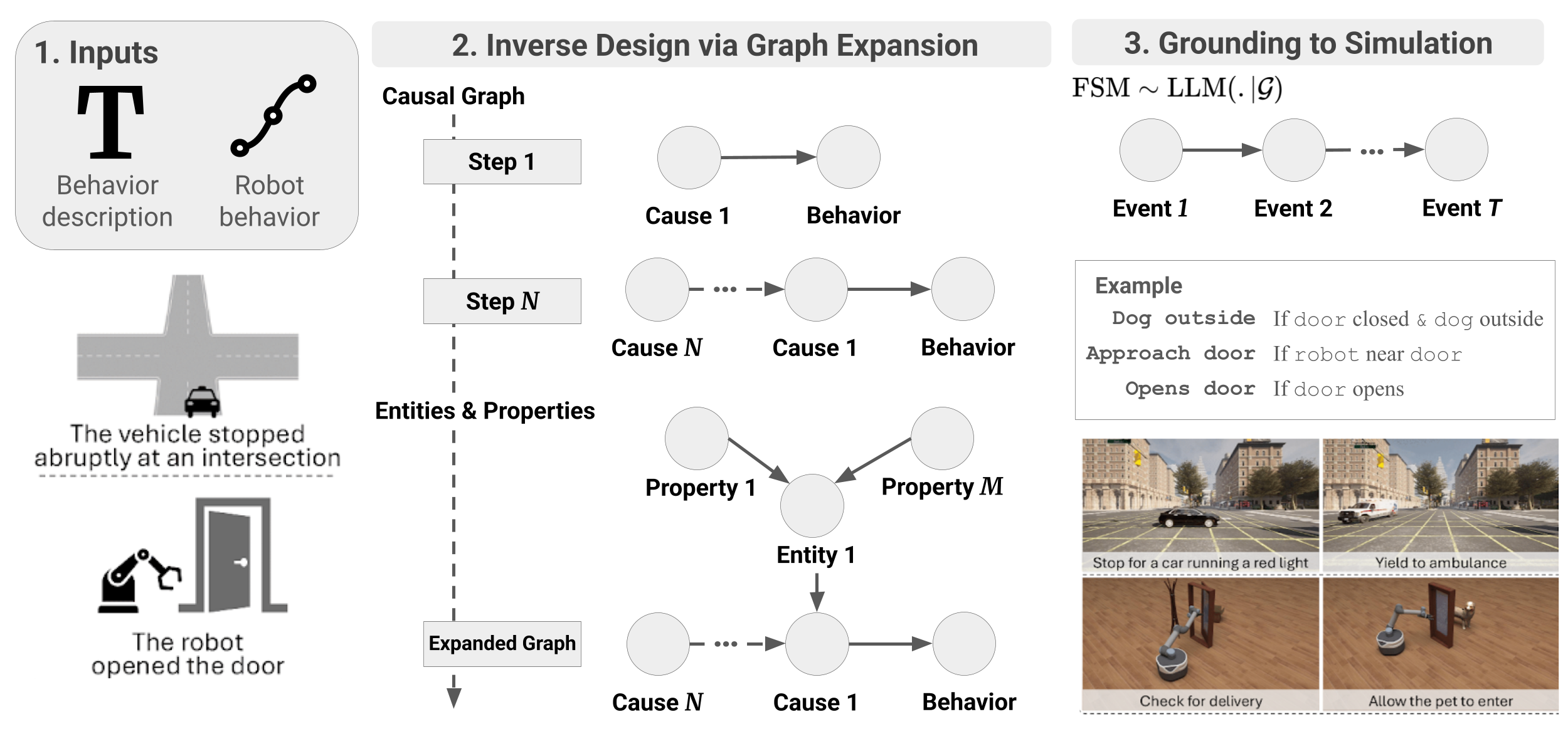
ReGen generates simulations from behavior by inferring plausible simulated environment where the behavior could have occurred through inverse design.
Abstract
Simulation plays a key role in scaling robot learning and validating policies, but constructing simulations remains labor-intensive. In this paper, we introduce ReGen, a generative simulation framework that automates this process using inverse design. Given an agent's behavior (such as a motion trajectory or objective function) and its textual description, we infer the underlying scenarios and environments that could have caused the behavior. Our approach leverages large language models to construct and expand a graph that captures cause-and-effect relationships and relevant entities with properties in the environment, which is then processed to configure a robot simulation environment. Our approach supports (i) augmenting simulations based on ego-agent behaviors, (ii) controllable, counterfactual scenario generation, (iii) reasoning about agent cognition and mental states, and (iv) reasoning with distinct sensing modalities, such as braking due to faulty GPS signals. We demonstrate our method in autonomous driving and robot manipulation tasks, generating more diverse, complex simulated environments compared to existing simulations with high success rates, and enabling controllable generation for corner cases. This approach enhances the validation of robot policies and supports data or simulation augmentation, advancing scalable robot learning for improved generalization and robustness.
Driving Results
Manipulation Results
"The robot closes the window..."
"The robot turns on the water faucet..."
"The robot opens the door..."
"The robot stores an item into storage..."
"The robot turns on the lamp..."
"The robot tilts the display screen..."
"The robot carries a bucket..."
Generative Robot Simulation via Inverse Design
ReGen begins by synthesizing plausible scenarios via LLM-guided graph search, where a causal graph is iteratively expanded. For each generated scenario, an LLM then produces a symbolic program that defines high-level constraints, serving as a verifier to ground the scenario in simulation.

BibTeX
@inproceedings{
nguyen2025regen,
title={ReGen: Generative Robot Simulation via Inverse Design},
author={Phat Tan Nguyen and Tsun-Hsuan Wang and Zhang-Wei Hong and Erfan Aasi and Andrew Silva and Guy Rosman and Sertac Karaman and Daniela Rus},
booktitle={The Thirteenth International Conference on Learning Representations},
year={2025},
url={https://openreview.net/forum?id=EbCUbPZjM1}
}